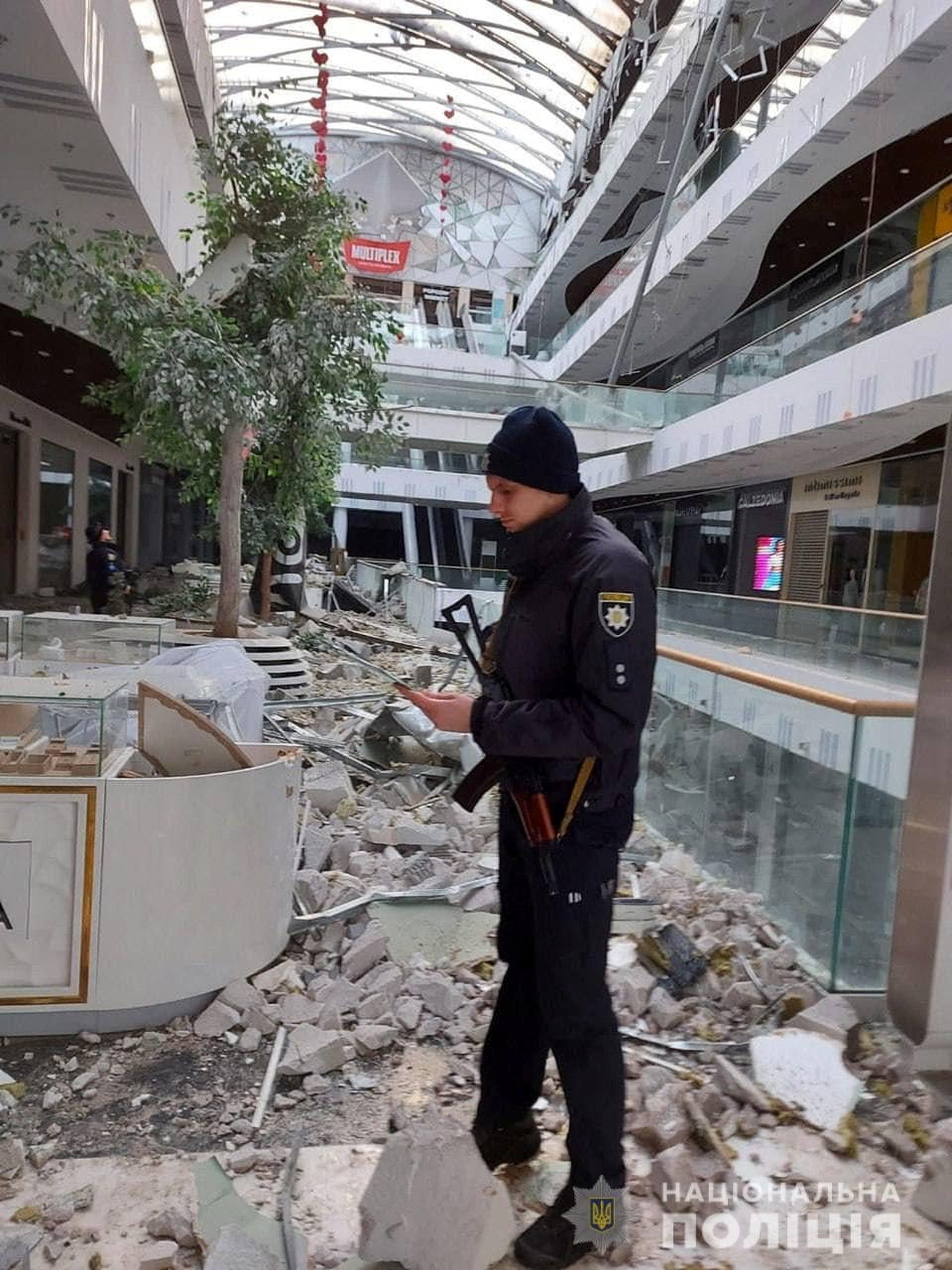Unable to take control of Kharkiv, Russia resorts to destroying it
Sign up now: Get ST's newsletters delivered to your inbox
Follow topic:
KYIV (NYTIMES) - Last month, Mr Dmytro Kuzubov put on his headphones and walked around Kharkiv, Ukraine, for hours. He felt that the war would start soon, and he wanted to visit some of his favourite places.
Kharkiv is his home town: a vibrant, youthful city of nearly 1.5 million people steeped in academia, art and literature.
The attacks started a few days later. Unable to take control of the city, Russia has resorted to destroying it. As in Syria and Chechnya, Russia aims to demoralise the city's inhabitants with overwhelming and indiscriminate firepower. It is following a similar plan in other Ukrainian cities, such as Mariupol and Mykolaiv.
"The most horrible thing was the whistle of jets. I will remember them all my life," said Mr Kuzubov, who has since fled Kharkiv, along with hundreds of thousands of others.
There were scenes of a destroyed kindergarten classroom, a living room blown open and the Old Hem, a popular pub in the basement of an apartment building, where a statue of Ernest Hemingway greeted patrons out front.
"It was one of my favourite places. A lot of stuff happened there - screaming, fights, drinking, funny songs," said Mr Alex Sedov, a third-generation Kharkivite. "It was a great place, and I'm very sad it's gone."
Russia has attacked Kharkiv with artillery, rockets, cluster munitions and guided missiles on at least 13 days, a relentless barrage, lately targeting the city at night. Most Kharkiv residents are Russian speakers, and many are ethnic Russians.
At least 500 civilians have been killed, according to the city's emergency services agency. The true number is likely higher, and rescue workers continue to dig through the rubble.
"Kharkiv is not yet completely destroyed, but we hear constant shelling, constant bombing," said resident Natalka Zubar, a 57-year-old IT professional who has remained in the city. "It's a place of constant airborne terror."
The city is full of historic monuments, home to 24 universities and about 200,000 students and professors. The main Kharkiv National University building still stands but has been damaged from nearby explosions.
Windows of one of the main university buildings were blown out, and the economics department was hit directly, destroying the building. A university gym was also in ruins.
"You would see so many young people on the streets; it gave the city this kind of energetic, vibrant feeling because of the youth," said Ms Maria Avdeeva, a disinformation and security expert. "Imagine tomorrow, life goes back to normal in Kharkiv. Where will they live? Where will they go to university?"
For Ms Avdeeva and other lifelong residents, the annihilation of the city is incomprehensible. She remains in Kharkiv, documenting its destruction. Last weekend, she walked around in search of stores still selling food.
"It was Saturday. Usually, you would think: go to a shop, go to a cafe - what a Saturday should be like," she said. "It's nothing of that kind now."
On March 1, a rocket struck directly in front of the Kharkiv regional administration building, an imposing structure in the city's main square that flew the Ukrainian flag from its roof.
The education department, the finance department - "almost everything which is connected to the functioning of the Kharkiv region" - had offices in the building, Ms Avdeeva said.
The building is not only important, it is meaningful too.
"It is the symbol of Kharkiv, and everyone who is coming to Kharkiv takes pictures here. There is no way you can come to Kharkiv and not notice this building," Ms Avdeeva said.
The adjacent square was also heavily damaged in the strike. Originally named after the founder of the Soviet secret police, the square was renamed Freedom Square after Ukraine gained independence in 1991.
"They are destroying our historical heritage and our architectural heritage. They want to destroy it all; they want to demoralise people," Mr Kuzubov said.
A week before the invasion, Mr Kuzubov and his friends went to see the movie Rhino by Ukrainian filmmaker Oleh Sentsov at the newly opened Nikolsky Mall.
At around 10.30pm on March 9, a rocket crashed through the roof, leaving shattered glass and debris everywhere inside.

<p>The shopping mall "Nikolsky" is seen destroyed in the aftermath of shelling amid the Russian invasion of Ukraine, in Kharkiv, Ukraine, in this picture uploaded on social media on March 10, 2022. Kharkiv Region Police/Handout via REUTERS THIS IMAGE HAS BEEN SUPPLIED BY A THIRD PARTY</p>
PHOTO: X80001
Some of Russia's strikes in the opening days of the invasion were aimed at military targets. Since then, they have been indiscriminate. Hundreds of apartment buildings have been hit.
"They are maximising the terror. They are shelling or bombing random objects now," Mr Zubar said. "But we would rather die fighting for the city than leave."

